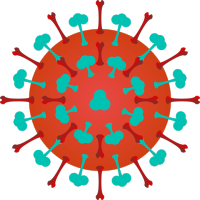search
subject
| symptom | White Eye with Gan |
| alias | White Membrane Invading Eye, Metal Gan (Phlyctenular Conjunctivitis) |
smart_toy
bubble_chart Concept
The term "white of the eye gan" refers to small bubble-like granules resembling jade grains that appear on the surface of the white of the eye, with one or several raised bumps surrounded by red threads, causing discomfort in the eye, photophobia, and tearing. If the bubble-like granules appear at the edge of the wind orbiculus and are accompanied by red vessels extending from the qi orbiculus, it is referred to as "white membrane invading eye."
This condition is called "metal gan (phlyctenular conjunctivitis)" in Zhengzhi Zhunsheng. It is also known by other names such as "white of the eye granule rise."
bubble_chart Pattern Analysis
- Wind-heat Invading the Lung︰The symptoms include white of the eye with bubble-like raised granules, occurring in varying locations, coming and going intermittently, surrounded by red streaks, red eye with itching and pain, heat tearing like hot water, excessive eye discharge making it difficult to open the eyes, thirst, a red tongue with slightly yellow coating, and a floating, rapid pulse. This is mostly caused by wind-heathexogenous pathogens invading internally and affecting the lungs, leading to excessive lung fire, which stagnates and accumulates. When wind predominates, there is eye itching and pain; when heat predominates, there is red eye with excessive eye discharge and heat tearing like hot water. The pulse manifestation is floating and rapid. The key diagnostic points are red eye with astringent pain, eye discharge, and tearing. Treatment should focus on dispersing wind and clearing heat. The recommended formula is Nine Immortals Powder with modifications, or Mulberry Root Bark Decoction with modifications.
- Heart Fire Flaring Upward︰The symptoms are small blister-like granules on the white of the eye, mostly near the canthus or at the edges of the palpebral fissure in both canthi, with red eyes, astringent pain, a red tongue tip, and a rapid pulse. This is often caused by pathogenic heat entering the interior, affecting the heart meridian, which over time transforms into fire, leading to stagnation of fire pathogen and upward flaring of heart fire. Alternatively, it may result from emotional depression, which transforms into fire and generates phlegm, causing phlegm-fire to disturb and stagnate, forming the condition. Both canthi belong to the heart, and when heart fire flares upward, small blister-like granules accumulate in the canthal regions. Excessive heat leads to redness, swelling, heat, and pain in the white of the eye, along with hot tears and excessive eye discharge, accompanied by irritability. The tongue is the sprout of the heart, hence the red tongue tip, and in severe cases, oral and tongue ulceration. A rapid pulse indicates the presence of heat. Treatment should focus on clearing the heart and reducing fire, with the prescription Xixin Powder recommended.
- Dampness-heat of Spleen and Stomach︰White of the eye with vesicle-like granules, the location is not fixed. The affected eye has erosion at the canthus or palpebral margin, tidal fever, heaviness of the head, fatigue, chest tightness, red tongue with greasy coating, and soggy rapid pulse. It is mostly caused by improper diet or excessive contemplation, which damages the spleen and stomach, leading to dysfunction in transportation and transformation, internal accumulation of water-dampness, and further invasion of pathogenic heat, or dampness stagnation generating heat, resulting in the binding of dampness-heat. When dampness-heat causes disease, the key diagnostic points include the white of the eye developing sores, redness and erosion at the canthus, loss of appetite, heaviness of the head, and fatigue. The tongue coating is greasy, and the pulse is soggy and rapid. Treatment should focus on clearing heat and draining dampness. The recommended formula is Powder of Capillaris and Five Ingredients with Poria, with appropriate additions of blood-activating, stasis-dispelling, and mass-softening herbs.
- Spleen and Stomach Yang Deficiency︰The white of the eye shows unfixed small bubble-like granules with few surrounding red streaks, accompanied by gastric fullness, dull pain in the epigastrium and abdomen, loose stools, lack of strength, a pale tongue with white coating, and a deep, thin, and weak pulse. This condition is often caused by consuming raw, cold, or rich foods, excessive use of cold and cooling medications, prolonged illness leading to poor nourishment, or congenital spleen-stomach weakness in children, resulting in impaired transportation and transformation, with cold pathogens rising and stagnating. Key diagnostic features include a pale red hue in the white of the eye, fine granules, cold limbs, lack of strength, clear urine, and loose stools. Additional symptoms may include gastric fullness, a white and greasy tongue coating, and a deep, thin, and weak pulse. Treatment should focus on warming the middle and dissipating cold, with the prescription Warming the Middle and Strengthening the Spleen Decoction recommended.
- Shenshi Yaohan.Eye Wart: "Metal gan (phlyctenular conjunctivitis) disease, this condition initially resembles a jade grain, but when it becomes severe, it can lead to calamities. It grows inside the eyelid, inevitably causing obstruction, astringent pain, and the formation of a nebula. If it grows on the qi orbiculus, it causes pain in the eye and tearing... If left untreated for a long time and if one violates the prohibitions and triggers it again, there is a risk of it transforming into fistula disease."






